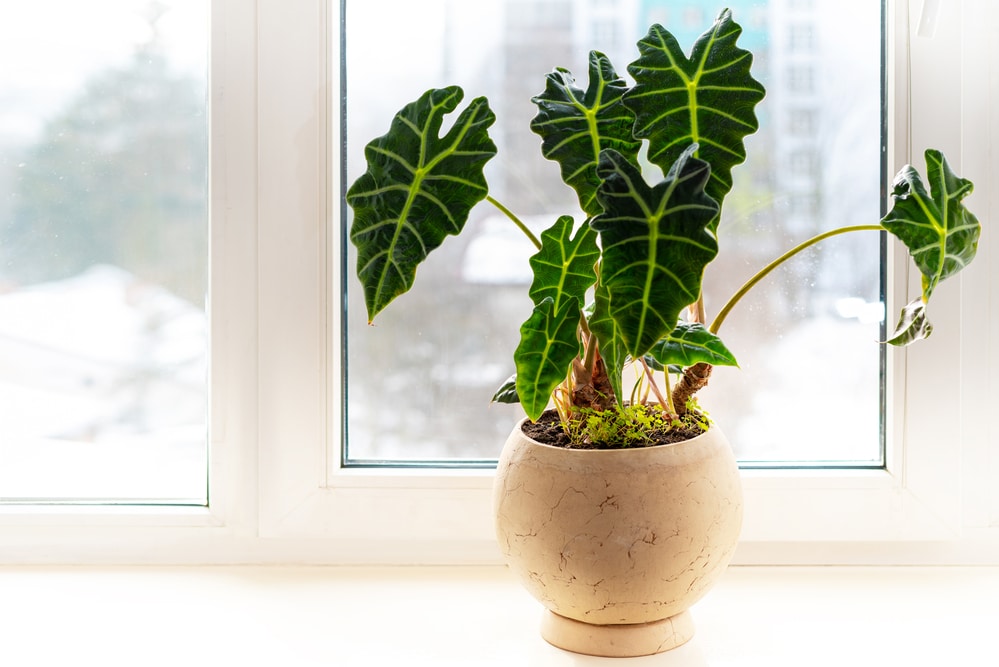Some pets don’t pay any attention to indoor plants, while others become utterly obsessed with digging up soil and chewing on leaves. If you have curious, free-roaming pets in your home, then you need to know which indoor houseplants might hurt them. Some of the most common houseplants are toxic for cats and dogs.
The poison helplines receive dozens of calls from scared dog and cat owners every day about potential poisonings. We don’t want this to be you! With literally thousands of plants available to brighten up your home, it’s easy to keep the toxic ones out and still have plenty of greenery.
Cats, dogs, birds, and people have different reactions to plants. For each species listed, we’ve included who is affected by it so you can create a safe haven for your animals and a beautiful plant-filled home.
How To Prevent Severe Pet Poisoning Incidents
- Don’t keep toxic plants indoors.
- Keep toxic plants up and out of the way of cats, dogs, and other pets. Don’t forget that cats are excellent climbers and infinitely curious. So are birds.
- Know the plants in your home. Make sure you know the scientific name as well as the common name – you don’t have to memorize them; just keep a list somewhere handy for easy reference in case of emergency.
- Have your veterinarian’s number and poison helpline numbers in an easy-to-access location – the refrigerator is always a good, centrally located spot for kids and adults to access.
What To Do If You Suspect A Poisoning
- Take a sample of the plant – leaves, stem, or any part that your animal threw up.
- Take pictures of the plant, too – just a few quick snapshots will help in case there is any question about the id. Usually, just a leaf isn’t enough for an accurate diagnosis – the vet or poison control will want to see the leaf or stem AND a picture or two.
- Call the veterinarian or take them to the vet’s office immediately if your pet is symptomatic (experiencing symptoms like throwing up, diarrhea, vomiting).
- If your pet is asymptomatic (not displaying symptoms), but you think the plant is poisonous, call your vet and poison control and follow their instructions.
- Do not induce vomiting – in some cases, this makes the poisoning worse.
- At any point, if you’re unsure what to do, err on the side of safety. Take your pet to the vet!
Animal Poison Control Organizations
- ASPCA Poison Control – (888) 426-4435 ($95 fee may apply)
- Pet Poison Helpline – (800) 213-6680 ($75 fee per incident)
- Poisons Help Facebook Group – This group of plant and fungi experts offer their expertise for free. DO NOT abuse this amazing group. Only post if your pet is symptomatic. These amazing people have full-time jobs and lives, and on the side, they id plants and fungi that children and pets have eaten. They only offer ID – they are not doctors and will not give medical advice. Use this resource if you’re unsure of the type of plant.
What To Expect At The Vet
The care a veterinarian provides depends entirely on the toxic plant. Not all plant poisonings are treated the same way – the different toxins require distinct treatment actions. This is why it is so incredibly important to tell the vet the plant causing the issue.
In most cases, the vet will:
- Ask you for a full report of the event – when did the symptoms occur? When did the pet ingest the plant (or when do you suspect it happened)? How much did your pet ingest – the amount is a crucial determiner in whether the animals will be okay or not.
- Take a urine and blood sample for analysis.
- Do an x-ray, ultrasound, or endoscopy to check for internal damage
- Induce vomiting to get rid of any leftover plant material (this sometimes makes things worse, so do not induce vomiting on your own – this action depends on the plant toxins)
- Give medicine if necessary
- Give intravenous fluids and/or oxygen therapy
Top 30 Most Toxic Plants To Pets
Here are a few of the most common toxic houseplants that all pet owners should look out for:
Alocasia (Elephant’s Ear)

All types of alocasia plants are toxic. They contain oxalate crystals which get released when a leaf is bitten or chewed. Oxalate crystals irritate the mouth and may burn the lips and tongues, cause drooling, and lead to vomiting. Ingesting the leaves often leads to gastrointestinal distress. This plant is especially problematic for cats and might lead to kidney failure. Keep this one far away from kitties!
- Symptoms: Drooling, vomiting, diarrhea
- Toxic to: Dogs, cats, birds
Aloe Vera (Aloe)
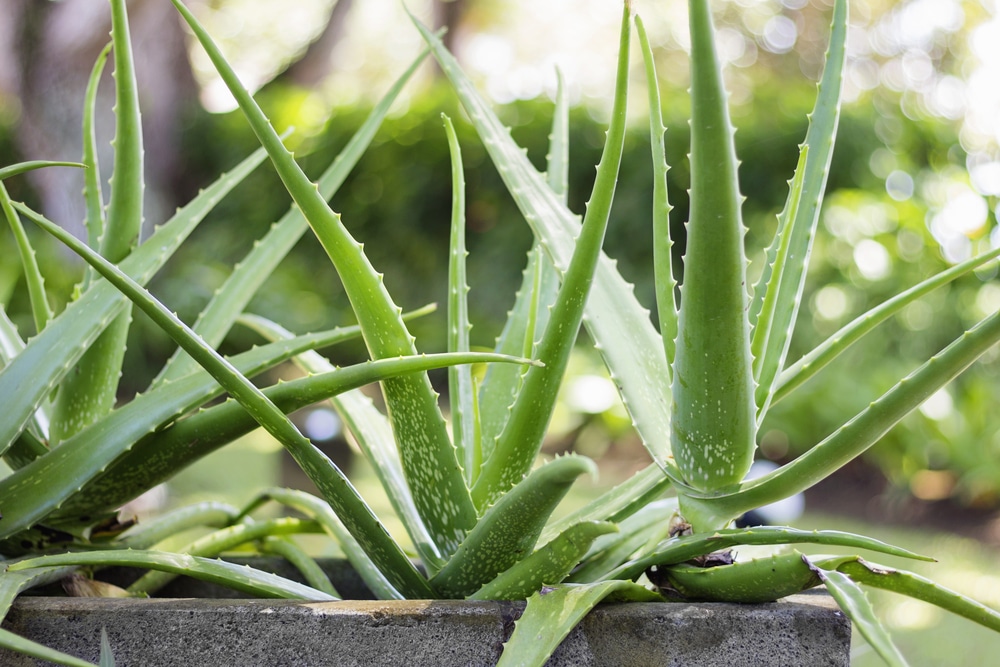
This super common houseplant is also dangerous for curious cats and dogs. Aloe plants contain a substance called anthraquinone glycoside, which is a laxative. While a small amount won’t cause serious harm, it may lead to diarrhea and vomiting.
The part of the aloe plant that is most troublesome is the white latex, the saponins (soap-like compounds). The mucus/gelatin part isn’t usually problematic. You can use aloe vera gel to treat wounds on your dog, cat, or kid without issue. However, if a large amount of the plant with the white latex is eaten, it can lead to lots of problems.
- Symptoms: vomiting, diarrhea, tremors, lethargy, change in urine color
- Toxic to: Dogs, cats, birds
Amaryllis (Hippeastrum/Amaryllis sp.)

This flowering bulb often comes indoors in winter to force flowering. The leaves, stems, and bulbs contain toxic compounds for people and pets. Amaryllis plant’s broad, drooping leaves are often difficult for pets to resist, especially cats. Kepp this one tucked away from curious animals.
- Symptoms: Excessive salivation, nausea, vomiting, breathing trouble, lethargy, diarrhea
- Toxic to: Dogs, cats, birds
Anthurium (Flamingo Flower, Laceleaf)

The sharp crystal oxalates of the Anthurium houseplant will irritate the mouth and possibly the gastrointestinal tract, too. Rarely the upper airway is affected, too, making it difficult to breathe.
- Symptoms: Excessive drooling, vomiting, diarrhea, trouble breathing, mouth and face irritation
- Toxic to: Dogs, cats
Asparagus Fern (Asparagus densiflorus cv sprengeri)

This fluffy, lacy fern is so delicate it looks like it couldn’t harm a fly, but it will cause trouble for your pets if they take too much of a liking to it. The most common problem is skin inflammation from repeated exposure to the fern fronds. So, if you see your cat or dog rubbing up against this plant, put a stop to it immediately.
Of more significant concern healthwise is if your pet eats any of the fern’s berries, which will cause vomiting and diarrhea. However, plants must be pollinated to produce berries, and that isn’t so common with indoor plants. So, for true indoor Asparagus ferns, berry production probably won’t occur and won’t be an issue.
- Symptoms: Allergic skin reaction from touching the plant, gastrointestinal distress from eating berries
- Toxic to: Dogs, cats
Bay Laurel (Laurus nobilis)

This tree is common in gardens and grows wonderfully indoors, as well. It also produces leaves that people commonly use in cooking – bay leaves! The leaves and flowers are very toxic for cats and dogs, though. They contain an essential oil, eugenol, which damages the liver.
In addition to the oils in the plants causing issues, bay leaves also cause a pet to choke if they eat the whole leaves. Bay leaves are quite large, especially for cats, and their edges are rather sharp and will scratch the esophagus and gut.
- Symptoms: Vomiting, diarrhea, throat or bowel obstruction
- Toxic to: Dogs, cats
Begonia
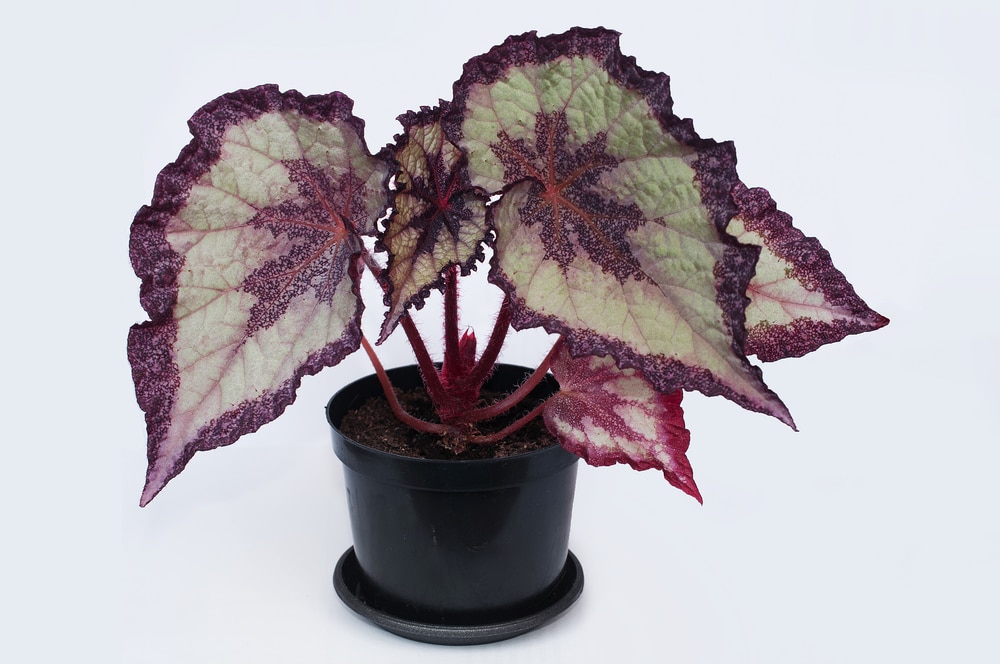
This is another plant with calcium oxalates which irritate and burn the mouth of pets and may cause lots of drooling and lethargy. The most toxic part of begonias, tubers, and rhizomes are thankfully underground.
Because the taste is so unpleasant and irritating, dogs and cats rarely go in for a second helping. This makes serious poisonings very uncommon for begonias. They’d have to eat quite a bit to get really sick.
- Symptoms: Drooling, vomiting, diarrhea, lethargy
- Toxic to: Dogs, cats
Caladium

The showy foliage of Caladium plants contains oxalates which are irritating to the mouth, lips, and tongue. The oxalates sometimes cause the mouth or tongue to swell, making it difficult to swallow.
- Symptoms: Drooling, vomiting, diarrhea, lethargy
- Toxic to: Dogs, cats, birds
Clivia (common names Bush Lily, Kaffir Lily)

This beautiful houseplant is similar to amaryllis in looks and toxicity. The bulbs are the most poisonous part, but all parts of the plant are toxic. Your pet would have to ingest large amounts to be in any real danger, but it’s still best to keep this one far and away from furry friends.
- Symptoms: Salivation, vomiting, diarrhea, convulsions, tremors, cardiac arrhythmias
- Toxic to: Dogs, cats
Chrysanthemum

Since they’re popular as cut flowers indoors, mums commonly cause pet poisoning. All mums should be kept far away from curious pets. They contain a number of toxins, including pyrethrum, which is used as a natural insecticide. Not something you want your pet eating!
- Symptoms: Salivation, vomiting, diarrhea, loss of coordination.
- Toxic to: Dogs, cats
Croton (Codiaeum sp.)
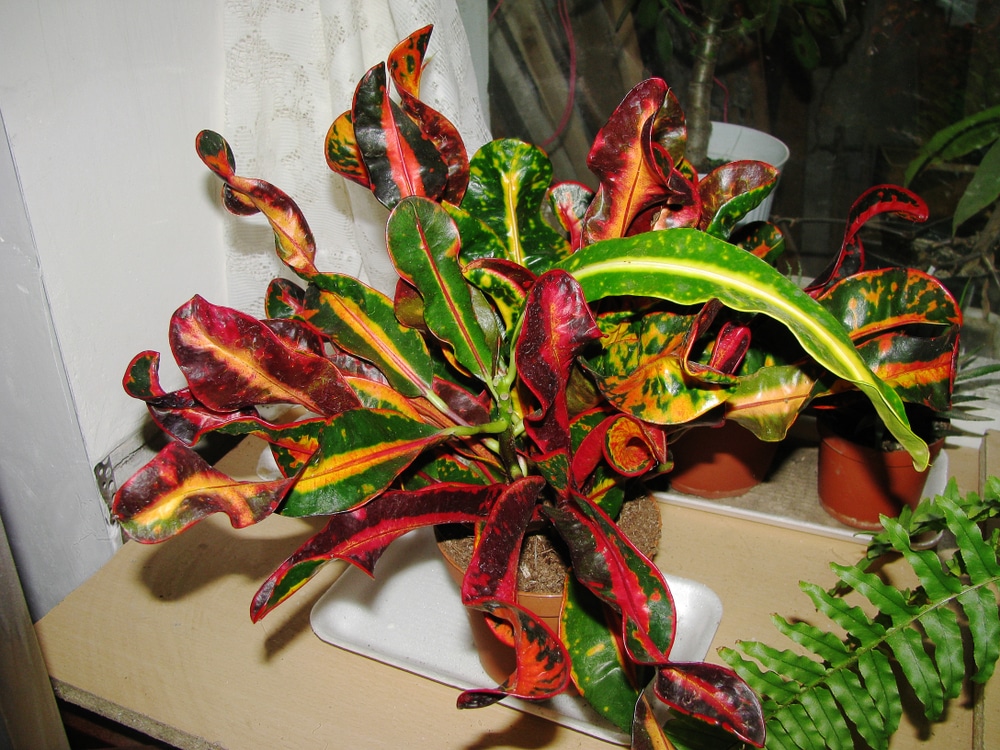
The bark, roots, and sap of Croton plants contain a compound that causes blistering and swelling if chewed. If enough is consumed, it leads to gastrointestinal issues. While the symptoms are usually on the milder side, this isn’t a good plant to have around pets who like to chew on things.
- Symptoms: Blistering around the mouth, swelling, abdominal pain, irritated eyes, nausea, diarrhea, vomiting
- Toxic to: Dogs, cats
Cyclamen

Saponins in the foliage of cyclamen plants cause a variety of problems for pets. Most of these are mild, thankfully. However, if a significant quantity of the tuber is ingested, the results can be deadly.
- Symptoms: Drooling, vomiting, diarrhea from foliage. Heart rate abnormalities, seizures, and death from tubers.
- Toxic to: Dogs, cats
Dieffenbachia (common name Dumb Cane)

The oxalates in dieffenbachia are problematic for pets, but usually, they stop eating it because of the irritation. Dieffenbachia oxalates form tiny needle-like crystals that catch on the mouth and throat. This may cause swelling, which then causes eating and drinking to be painful.
- Symptoms: Drooling, vomiting, diarrhea, lethargy
- Toxic to: Dogs, cats, birds
Dracaena (common names Dragon Tree, Corn Plants, Lucky Bamboo)
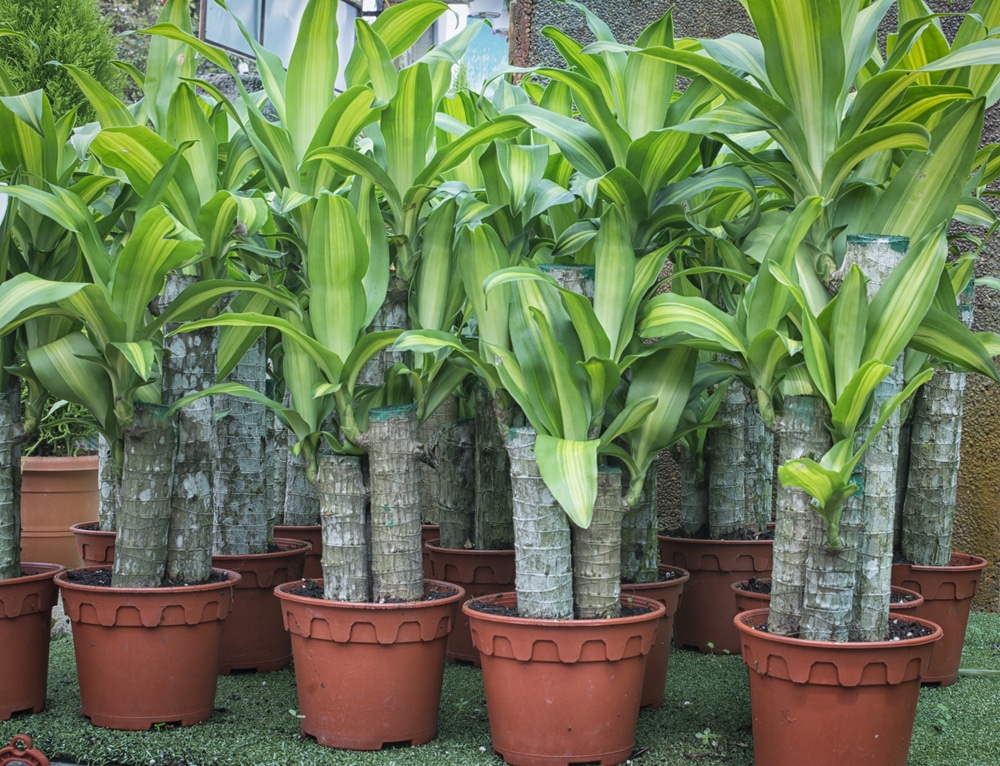
The saponins in dracaena species cause mild poisonings unless ingested in large amounts. This is good because there are many reports of cats, in particular, loving to chew these leafy plants. The bitter-tasting saponin usually is enough to deter most cats and dogs.
- Symptoms: Drooling, vomiting, lethargy, not eating, dilated pupils (cats)
- Toxic to: Dogs, cats
English Ivy
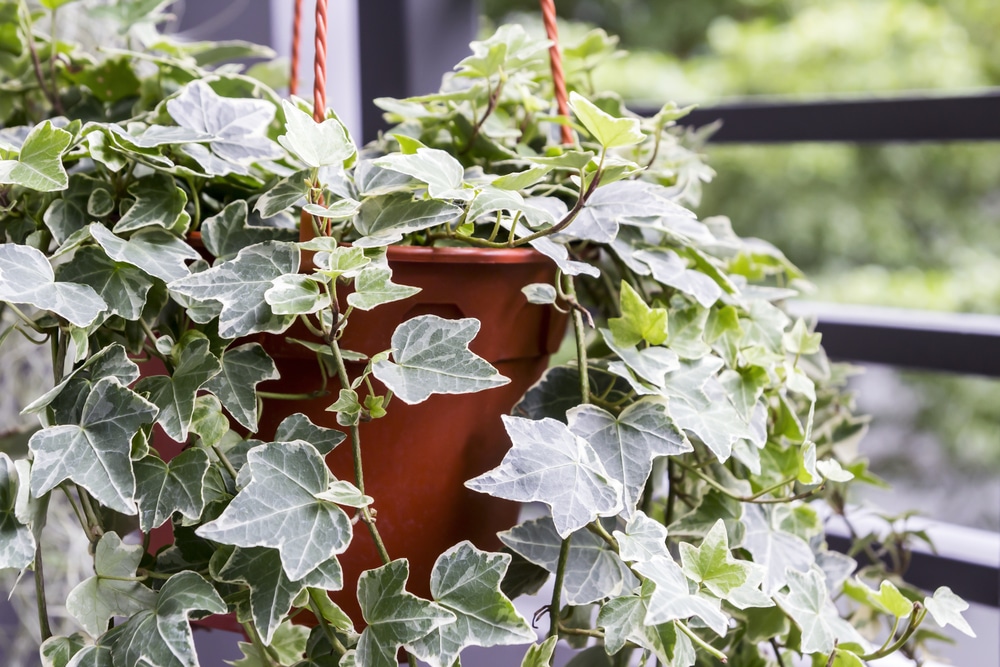
The saponins in ivy are considered mildly toxic but can cause a lot of pain and symptoms. The foliage on these plants is more toxic than the berries, so it’s best to keep them out of the reach of pets.
- Symptoms: Drooling, mouth irritation and swelling, vomiting, abdominal pain, diarrhea,
- Toxic to: Dogs, cats, birds
Jade Plant (Crassula argentea)

Experts are uncertain what compounds cause the toxicity, but they do know this one should be kept away from furry children. Some animals find the thick succulent leaves irresistible. Thankfully, most poisonings are mild, but it’s best not to take chances.
- Symptoms: Lethargy, vomiting, disorientation, impaired coordination, convulsions
- Toxic to: Dogs, cats
Kalanchoe (Mother of Millions, Chandelier Plant, Mother-in-Law Plant)

This group of plants contains cardiac toxins, but pets rarely eat enough of it for that to be a concern. The more common issues are gastrointestinal. However, if your pet does consume a lot, a trip to the vet is in order.
- Symptoms: Vomiting, diarrhea, weakness, abnormal heart rate and rhythm (rare)
- Toxic to: Dogs, cats, birds
Lilies

Lilies are extremely dangerous to cats. If you bring any lilies indoors, make sure there is no way the cat(s) can access them. All parts of the plant are highly toxic, including leaves, stems, and flower petals. Just ingesting a small amount of pollen or drinking water from the vase can send a cat into kidney failure. Death is possible.
- Symptoms: Vomiting, lethargy, lack of appetite, kidney failure
- Toxic to: Cats
Monstera (common name Swiss Cheese Plant, Split-Leaf Philodendron)
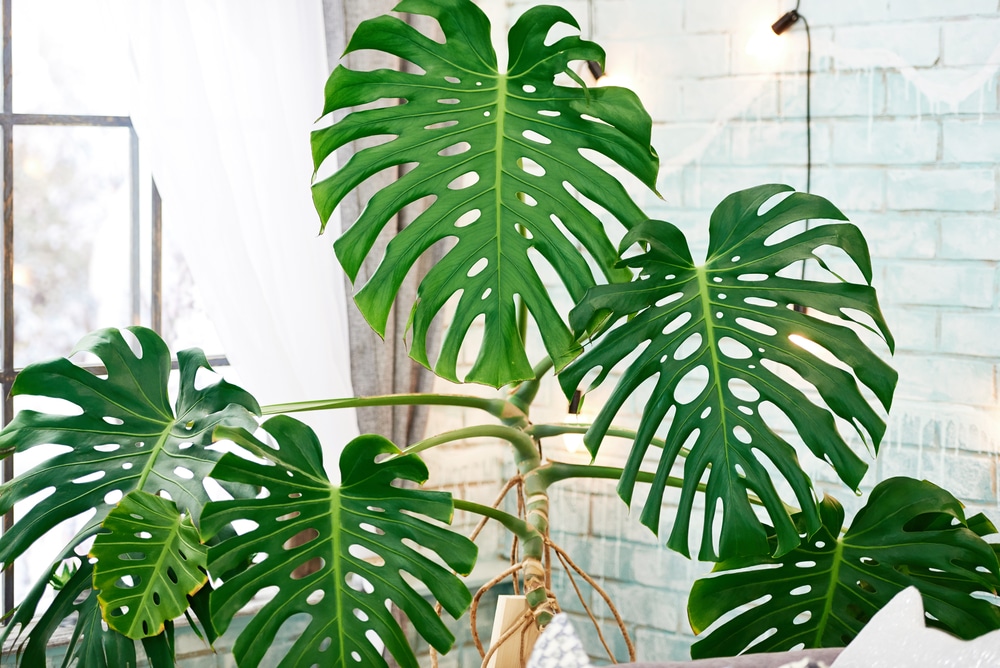
This ever-popular houseplant is a mildly toxic plant that is not good to have around pets who like to chew on leaves. The foliage contains oxalates which irritate the skin and may cause other, more severe issues. Rarely, if ever, is the results deadly, thank goodness.
- Symptoms: Irritation and swelling around mouth, tongue, and lips, excessive salivation, vomiting, difficulty swallowing
- Toxic to: Dogs, cats
Peace Lily (Spathiphyllum)

Like many other plants on this list, Peace lilies contain oxalates which cause lots of irritation to pets. Biting or chewing on the plant will cause burning, possible swelling, and likely lots of drooling. Keep an eye out for trouble swallowing, as this is a more serious side-effect.
- Symptoms: Drooling, oral irritation, vomiting, diarrhea, lethargy
- Toxic to: Dogs, cats, birds
Philodendron
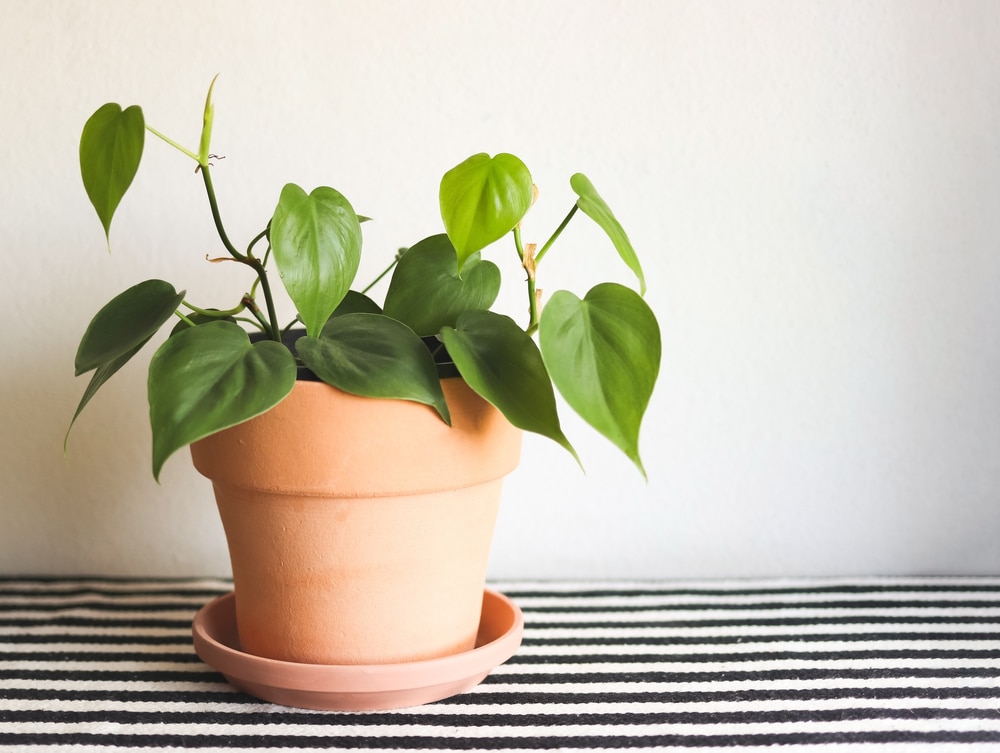
One of the most popular indoor houseplants, philodendron, contains oxalate crystals which will irritate and usually burn the mouths of dogs and cats. Usually, pets learn quickly to stay away from these houseplants. The toxicity is mild unless large amounts are ingested. Difficulty swallowing is usually the biggest concern.
- Symptoms: Drooling, oral irritation, vomiting, diarrhea, lethargy
- Toxic to: Dogs, cats, birds
Pothos (Epipremnum aureum, common name Devil’s Ivy)
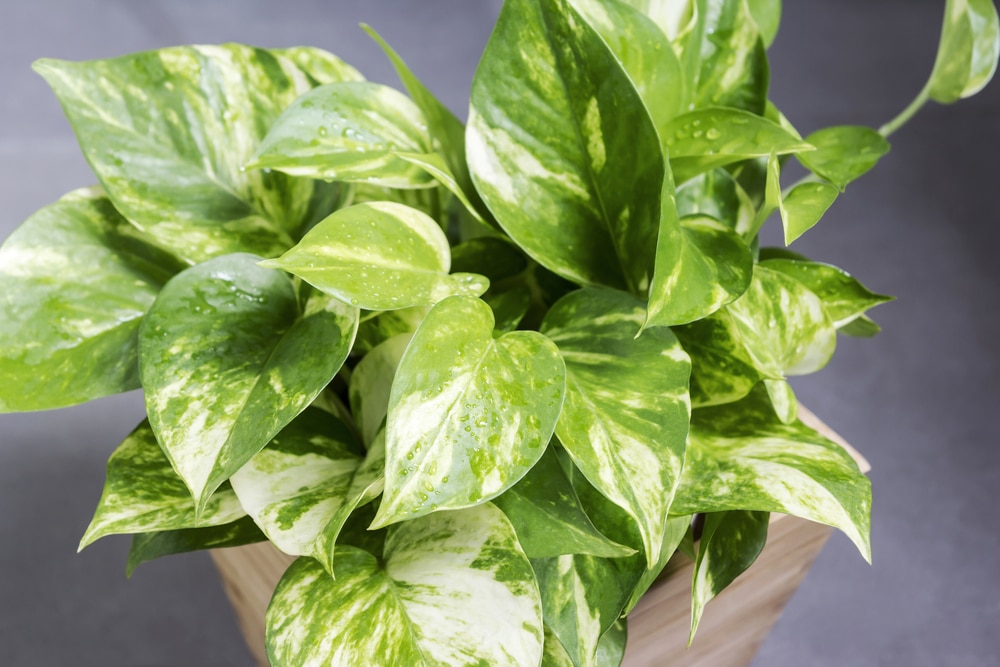
Like Philodendrons and many other houseplants, the oxalate crystals in Pothos are very sharp and will irritate the mouth and gastrointestinal tract of furry animals.
- Symptoms: Drooling, vomiting, diarrhea, lethargy
- Toxic to: Dogs, cats, birds
Poinsettia (Euphorbia pulcherrima)

While the holidays are prettier with poinsettias around, they’ll stop any celebration if a beloved pet eats any part of it. Poinsettia plants are not usually super toxic but will cause unpleasant symptoms.
- Symptoms: Mouth and stomach irritation, gastrointestinal upset, vomiting
- Toxic to: Dogs, cats
Rubber Tree, also known as Weeping Fig or Rubber Fig (Ficus elastica)
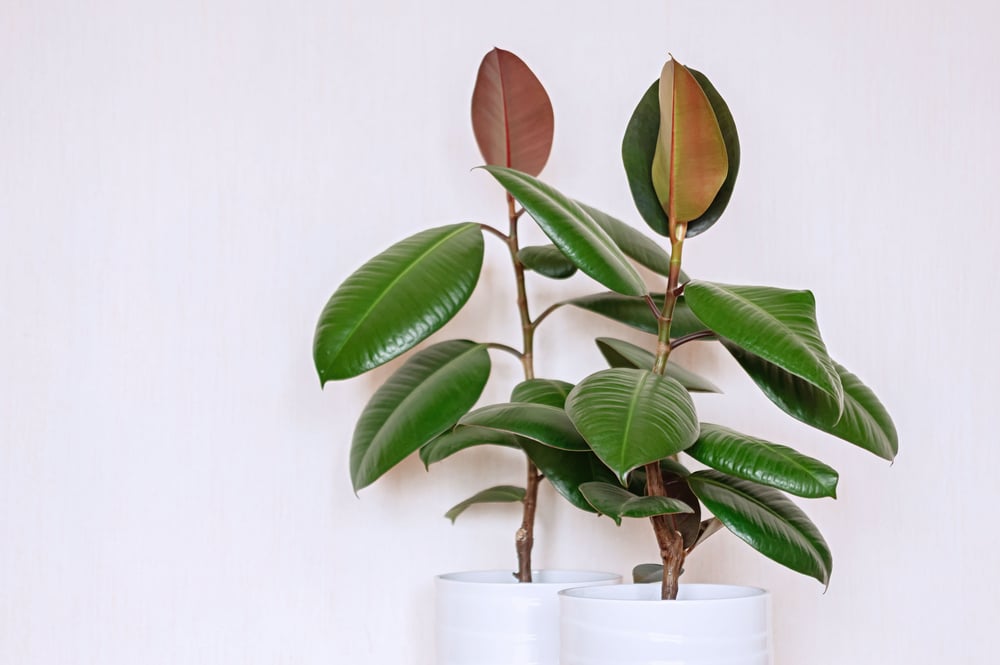
(This is different from the Rubber Plant, Peperomia, which is non-toxic)
The sap from the rubber tree causes burning rashes, gastric upset, and interrupts natural body function. While the rashes aren’t that dangerous, they’re very irritating for your pet. Dogs may experience liver damage if they eat a large amount of this plant, so consult a veterinarian immediately. Those symptoms can take 6-8 weeks to appear.
- Symptoms: Rash, mouth irritation, nausea, drooling, appetite loss, diarrhea, vomiting, abdominal swelling, liver damage
- Toxic to: Dogs, cats
Sago Palms
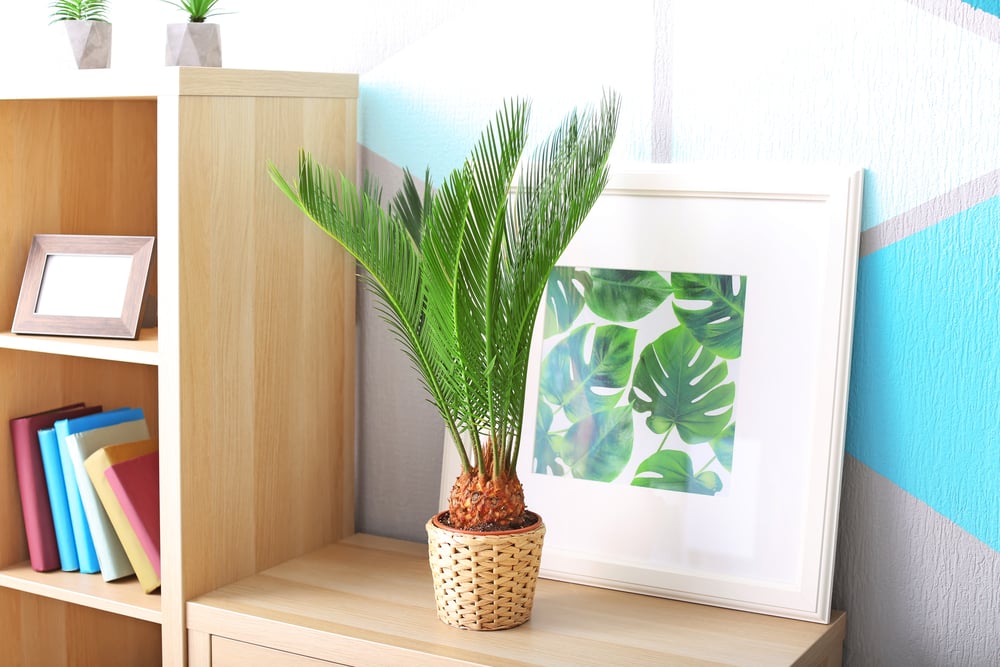
These shrubby plants look like palms but are not true palm trees. They’re popular as bonsai plants indoors. While they look stunning inside, they must be kept away from pets.
All parts of the plant are poisonous, but the seeds are the worst. The cycasin compounds are very poisonous, cause horrible pain, and may lead to death. For cats, it may be instantaneous. For dogs, the survival rate is 30-50%. Poisoning signs appear in as little as 15 minutes or up to several hours.
- Symptoms: Vomiting (may be bloody), jaundice, bruising, diarrhea (may be bloody), tremors, seizures, liver failure, coma
- Toxic to: Dogs, cats, birds
Schefflera (common name Umbrella plants)
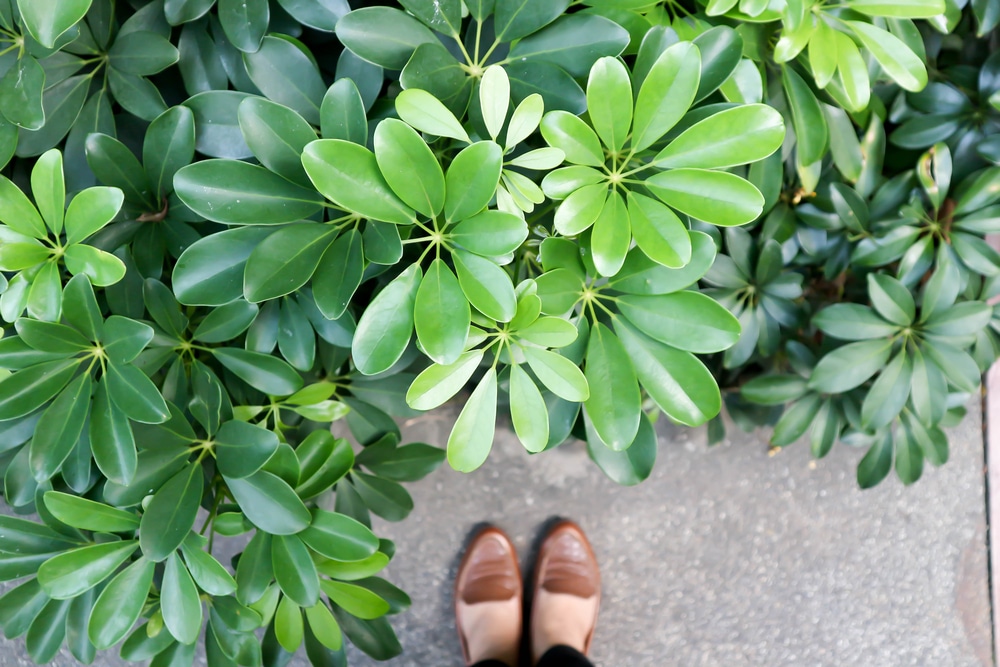
When chewed or ingested, calcium oxalate crystals cause intense burning, skin irritation, and other issues. Umbrella plants should be kept away from plant-curious pets.
- Symptoms: Irritation and swelling around mouth, tongue, and lips, excessive drooling, vomiting, difficulty swallowing
- Toxic to: Dogs, cats
Snake Plant (Sansevieria)

The saponins in Snake plants create a foaming effect (like soap) that leads to stomach upset. Usually, this is mild and will go away on its own. However, if a large amount is consumed or the symptoms last a long time, seek out expert care.
- Symptoms: Nausea, excessive drooling, vomiting, diarrhea
- Toxic to: Dogs, cats
Syngonium (common name Arrowhead Vine)
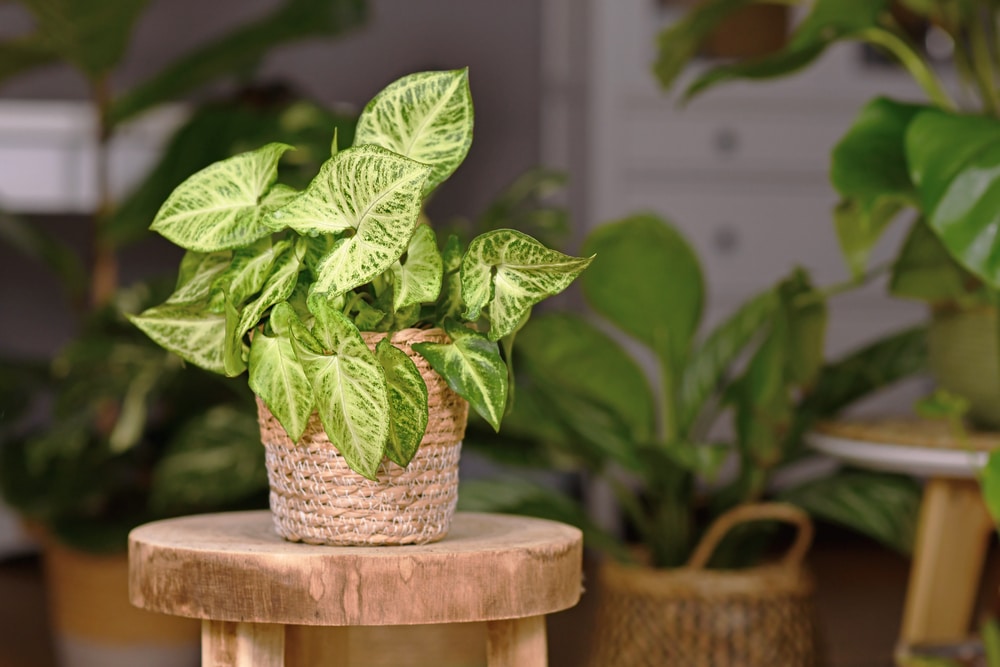
The calcium oxalates are highly irritating, especially if a lot are consumed. This generally only happens if your dog or cat is chewing on the plant. Keep this one up and away from mouthy pets.
- Symptoms: Irritation and swelling around mouth, tongue, and lips, excessive salivation, vomiting, trouble swallowing
- Toxic to: Dogs, cats
Yew (Taxus sp.)

This isn’t a common houseplant, but it is used regularly to create bonsai trees, especially around the holidays. Yew trees are deadly to both cats and dogs and must be kept away from your furry friends.
- Symptoms: Tremors, seizures, difficulty breathing, leads to acute cardiac failure
- Toxic to: Dogs, cats, birds
ZZ Plant (Zamioculcas zamiifolia)
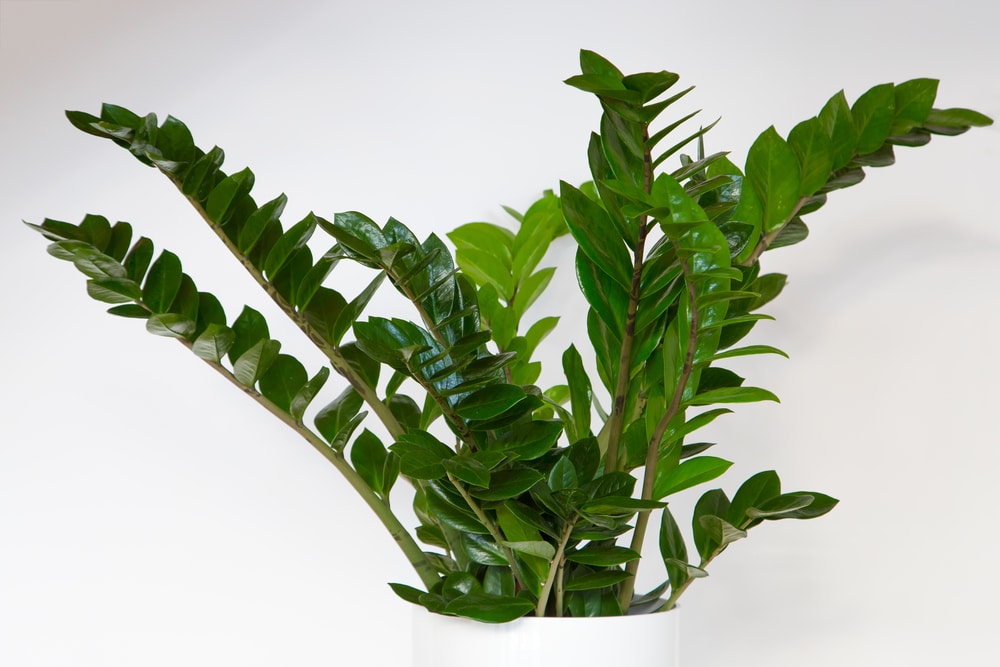
This isn’t a highly toxic plant, but the calcium oxalates will cause your pet a lot of distress if ingested. Mouth burning, skin irritation, and swelling are the most common issues.
- Symptoms: Irritation, burning, and swelling around mouth, tongue, and lips, excessive drooling, vomiting, trouble swallowing
- Toxic to: Dogs, cats
Non-Toxic Pet-Friendly Houseplants
Here are a few common houseplants that are completely safe for you pets. For a more detailed list, check out our pet-friendly plant guide.
- Christmas Cactus
- Boston Fern
- African Violet
- Cast Iron Plant
- Echeveria
- Donkey’s Tail
- Parlor Palm
- American Rubber Plant
Next time you’re at the plant store or searching online for the newest plant baby, don’t forget about your fur babies. Some pets don’t care about plants at all, while others just can’t leave them alone.
If you’ve got one of the overly curious, gets into everything type furry friend, it’s best to avoid all the plants on this list. For others with more mindful pets, some of the less toxic plants are probably okay – you’ll just have to keep an eye on them and make sure they’re not suddenly plant curious!
